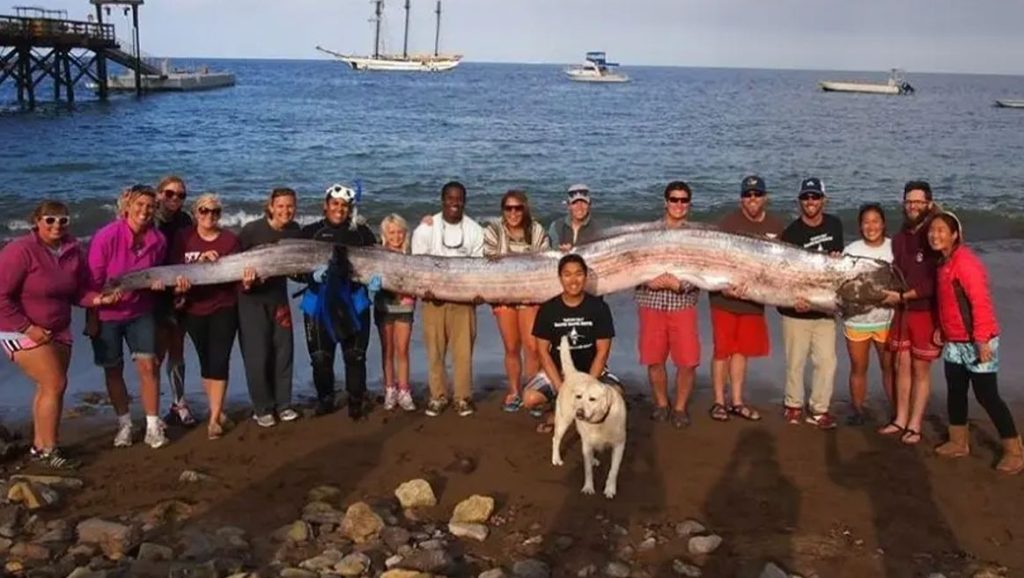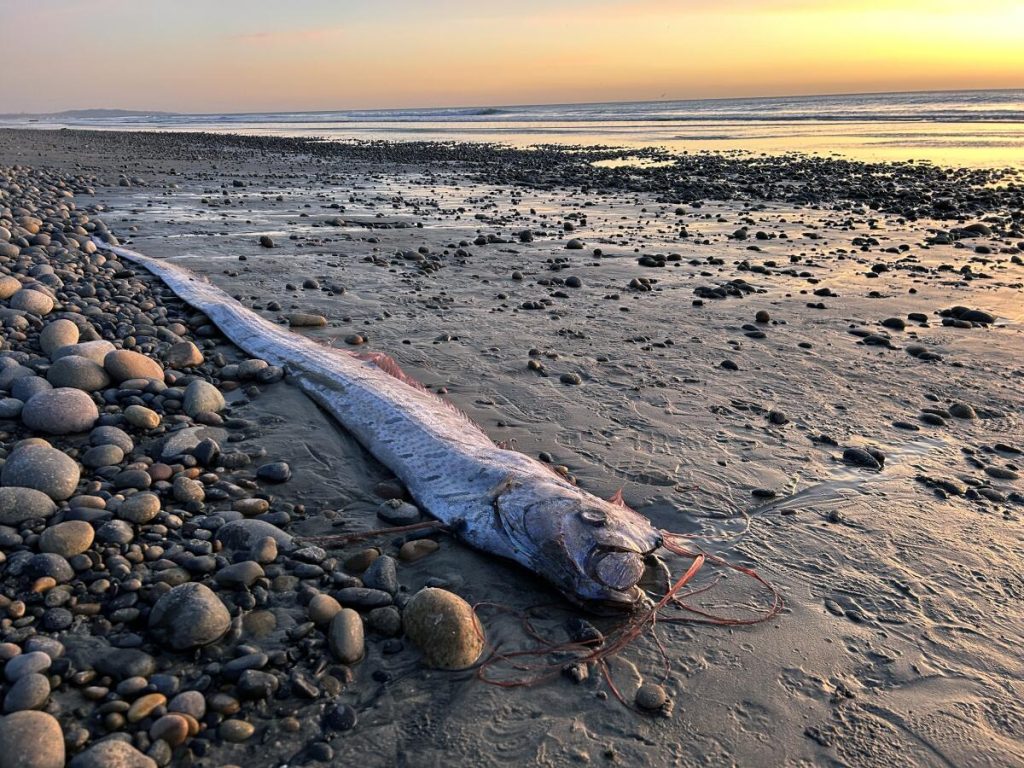In recent years, multiple rare appearances of the deep‑sea oarfish, often called the “doomsday fish,” have captured public attention. These elongate, ribbon‑like creatures sometimes wash ashore an event steeped in myth, fear, and misunderstood biology.
Unsettling Sightings Around the World
Mexico’s Beach Encounter
On February 9, 2025, a juvenile oarfish washed up alive on Mexico’s Pacific coast. The occurrence sparked widespread speculation as locals and social media users tied it to impending disaster. Although the fish appeared small and sick, many worried it was a portent of doom.

Tasmania’s “Keeper of the Sea”
Just months later, a dead oarfish measuring roughly three metres was discovered on Ocean Beach near Strahan, Tasmania. Locally dubbed the “king of herrings,” its silvery body and striking head markings fascinated onlookers. The find triggered more curiosity than panic, and scientists swiftly collected samples for study before seabirds could disturb the carcass.
Triple Strandings in Australia and New Zealand
In early June 2025, three enormous oarfish washed ashore within a single week—one in Tasmania and two in New Zealand (near Dunedin and Birdlings Flat). Two of these were headless, which limited scientific investigation into features like otoliths and gill rakers. Despite sensational folklore, experts are quick to point out that no link to natural disasters has been established.
Myth vs. Science: Are Oarfish True Harbingers of Disaster?
Folklore Origins
In Japanese tradition, oarfish are known as “Ryūgū‑no‑Tsukai” (“messengers from the sea god’s palace”) and are believed to beach themselves before earthquakes or tsunamis. This myth deepened after dozens of oarfish were found in Japan leading up to the devastating 2011 Tōhoku earthquake and tsunami.
Scientific Evidence Says Otherwise
Marine biologists emphasize that these myths lack empirical support. A 2019 peer‑reviewed study found no credible correlation between oarfish beachings and seismic events. Experts point out that oarfish typically live at depths of 150–1,000 m and surface only when injured, disoriented, or dying. They are poor swimmers and prone to wash ashore in such conditions—not necessarily before earthquakes.
Biology of a Mysterious Deep‑Sea Giant
The oarfish family (Regalecidae) includes three species found in temperate to tropical seas worldwide. The giant oarfish, Regalecus glesne, holds the title of the longest bony fish, reaching up to about eight metres (26 ft). These fish are deep-sea dwellers with ribbon-like bodies, crimson dorsal fin crests, and smooth, scale-free skin. They feed on zooplankton, small crustaceans, jellyfish, and squid, capturing prey mainly by suction—not pursuit. Unlike many fish, oarfish lack a swim bladder. This anatomical trait causes them to drift and surface easily if weakened. Many live strandings occur during ocean current shifts or when individuals become ill or disoriented—rather than as predictive signals of natural events.
Public Reaction and Media Sensation
Whenever oarfish appear, social media erupts. Videos and posts often frame them as prophetic warnings of earthquakes or tsunamis. Comments such as “something bad is going to happen” or “they show up before disasters” reflect deep-rooted fears, especially following widely circulated footage from Mexico, California, and Japan. Nevertheless, scientists encourage a grounded perspective. Increased sightings may reflect shifting ocean dynamics—such as El Niño/La Niña cycles—environmental changes like red tides, or simply greater oceanic monitoring and reporting.

The Bottom Line: Beauty Over Belief
- Oarfish strandings are rare but not unprecedented and typically involve weakened or deceased individuals.
- Despite enduring folklore, no scientific evidence links these events to upcoming earthquakes or tsunamis.
- The creatures’ physiology—deep‑sea habitat, low muscle mass, absence of swim bladder—contributes to their occasional surfacing.
- While cultural narratives persist, modern research points to environment, illness, and chance, not prophecy.
- In essence, oarfish sightings continue to be mesmerizing but not ominous. They offer rare glimpses into oceanic mysteries—not harbingers of doom.

















